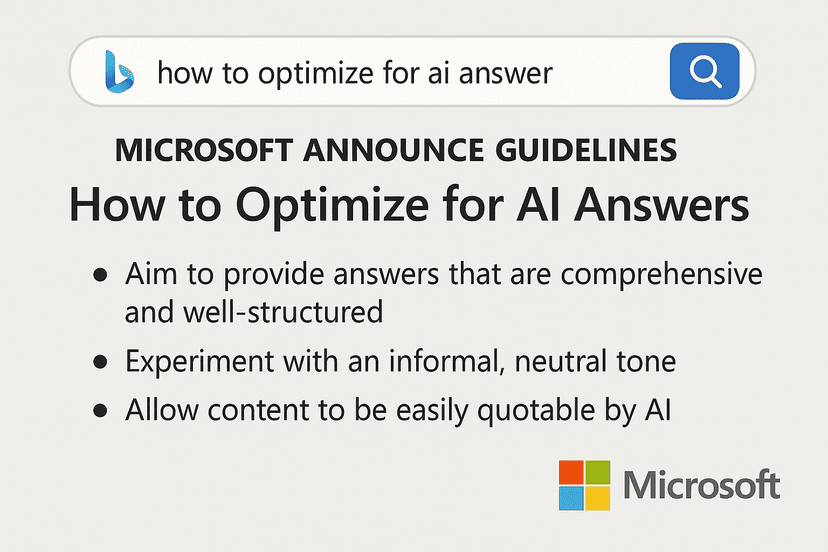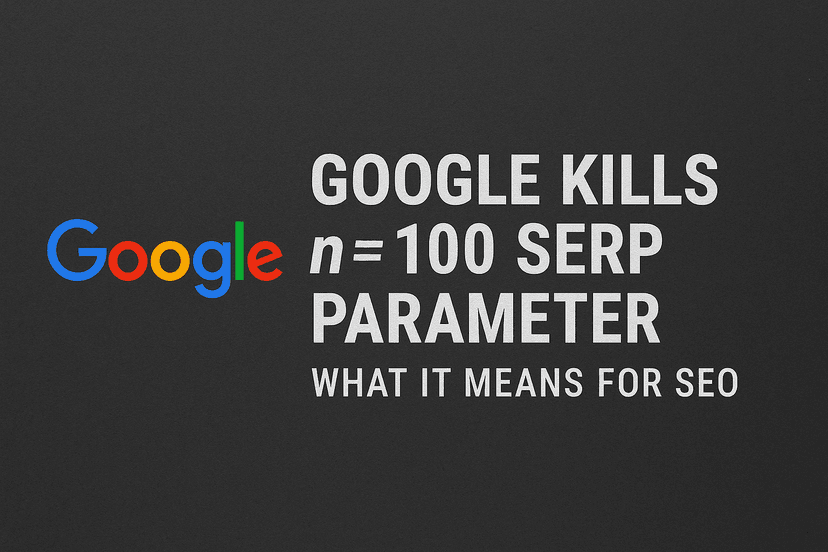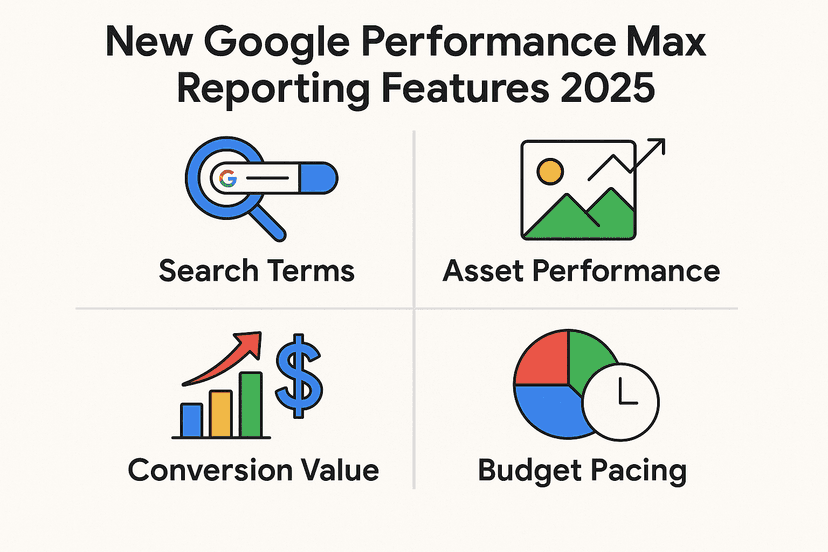Introduction
In the dynamic world of digital marketing, search engine optimization (SEO) continues to be a vital strategy for businesses seeking online visibility. At the heart of any successful SEO campaign lies a robust foundation of thorough keyword research. This critical process is not just about finding words and phrases your target audience uses—it’s about understanding their intent, needs, and the language they speak while searching for solutions.
Keyword research has evolved significantly over the past decade. Gone are the days when stuffing content with high-volume keywords was enough to rank well. Modern search engines, led by Google’s sophisticated algorithms, now prioritize content that demonstrates expertise, authority, and trustworthiness while matching user intent. This evolution has transformed keyword research from a simple task of finding popular search terms into a complex discipline that requires strategic thinking, data analysis, and deep customer insight.
This comprehensive guide will take you through every aspect of keyword research—from understanding its fundamental principles to implementing advanced strategies that drive meaningful traffic to your website. Whether you’re new to SEO or looking to refine your existing keyword strategy, this resource will equip you with the knowledge and techniques needed to identify the most valuable keywords for your business and effectively incorporate them into your Content Marketing strategy.
By the end of this guide, you’ll have a clear understanding of how to conduct keyword research that not only improves your search rankings but also attracts the right visitors who are more likely to convert into customers. Let’s dive into the world of keyword research and discover how to leverage its power for your SEO success.
What is Keyword Research?
Keyword research is the systematic process of discovering and analyzing the terms and phrases that people enter into search engines when looking for information, products, or services. It forms the bedrock of search engine optimization, providing valuable insights into the language your target audience uses and the topics they’re interested in.
Definition and Core Concepts
At its core, keyword research involves identifying:
- Search terms your potential customers are using
- Search volume for these terms (how many people search for them)
- Keyword difficulty (how hard it is to rank for these terms)
- Search intent behind these queries (what users are trying to accomplish)
- Relevance of these terms to your business offerings
But keyword research is more than just compiling lists of popular search terms. It’s about understanding the ecosystem of queries related to your industry and how they reflect different stages of customer awareness, interest, and decision-making.
The Scope of Modern Keyword Research
Modern keyword research encompasses:
- Market analysis: Understanding your audience segments and their unique search behaviors
- Competitive intelligence: Identifying terms your competitors rank for and finding gaps in their strategy
- Content opportunity discovery: Finding topics with ranking potential that align with your business goals
- Intent mapping: Categorizing keywords based on user goals (informational, navigational, commercial, transactional)
- Performance forecasting: Estimating potential traffic and conversion value of targeting specific terms
When done properly, keyword research reveals not just what words people use, but provides insights into customer psychology, market trends, competitive landscapes, and content opportunities.
Why Every Business Needs Keyword Research
Regardless of your business size or industry, keyword research is essential because:
- It connects you with people actively searching for what you offer
- It helps you speak your customers’ language, not industry jargon
- It reveals questions and concerns your audience has about your products or services
- It uncovers new market opportunities you might otherwise miss
- It informs virtually every aspect of digital marketing, from website structure to content creation
This foundational process ensures your SEO efforts are built on solid ground, targeting terms that will drive not just any traffic, but the right traffic to your digital properties.
Why Keyword Research Matters
The importance of keyword research extends far beyond simply trying to achieve high search engine rankings. It directly impacts your business growth, marketing efficiency, and ability to connect with your audience in meaningful ways.
Foundation of Content Strategy
Keyword research serves as the compass that guides your content creation efforts. Without it, you’re essentially creating content in the dark, hoping it resonates with your audience. With proper keyword insights:
- You can develop content that addresses specific questions and needs
- You can prioritize content topics based on potential traffic and business value
- You can identify content gaps in your existing library
- You can structure your website around topics that matter to your audience
Organizations that base their content strategy on solid keyword research typically see higher engagement rates, better conversions, and more efficient use of content marketing resources.
Connecting With User Intent
Perhaps the most valuable aspect of modern keyword research is the window it provides into user intent. Every search query carries implicit intent—what the user hopes to accomplish by performing that search. By analyzing the keywords and phrases your audience uses, you gain critical insights into:
- What problems they’re trying to solve
- What stage of the buying journey they’re in
- What specific information they seek
- What format of content they prefer
For example, someone searching for “what is SEO” has different needs than someone searching for “best SEO agency in Chicago.” Understanding these distinctions allows you to create content that precisely matches what users want to find.
Competitive Advantage
Thorough keyword research can reveal opportunities your competitors have missed. By identifying:
- Low-competition keywords with reasonable search volume
- Questions your competitors haven’t adequately answered
- Emerging trends in your industry’s search landscape
- Gaps in your competitors’ content strategies
You can position your business to capture traffic your competitors aren’t targeting, establishing authority in specific niches before others recognize the opportunity.
Business Impact Beyond SEO
The insights gained from keyword research extend beyond search optimization:
- Product development: Discovering what features or solutions potential customers are searching for
- Customer service: Identifying common questions and concerns to address proactively
- Brand messaging: Understanding the language that resonates with your audience
- Market expansion: Finding related topics and interests that might represent new business opportunities
When leveraged properly, keyword research becomes not just an SEO task but a valuable business intelligence asset that informs strategic decisions across departments.
The Evolution of Keyword Research
To understand the best practices of keyword research today, it’s helpful to examine how this discipline has evolved alongside search engines themselves. This evolution reflects changing user behaviors, technological advancements, and Google’s increasingly sophisticated algorithms.
The Early Days: Exact Match and Keyword Density
In the early 2000s, keyword research was relatively straightforward. SEO professionals would:
- Identify high-volume keywords
- Place these exact keywords in strategic locations (title tags, headings, content)
- Ensure a certain “keyword density” (percentage of content containing the keyword)
This approach worked because search engines primarily matched text strings in queries with text strings on websites. The emphasis was on:
- Exact match keywords: Optimizing for the precise phrases users searched for
- High volume: Targeting the most frequently searched terms
- Strategic placement: Ensuring keywords appeared in specific HTML elements
The Shift to User Intent and Semantic Search
Around 2013, Google’s Hummingbird update marked a significant transition toward semantic search—understanding the meaning behind queries rather than just matching text. This was followed by RankBrain in 2015, which introduced machine learning to better understand search queries.
These developments transformed keyword research by:
- Shifting focus from keywords to topics and concepts
- Emphasizing the importance of related terms and natural language
- Making search intent a central consideration
- Reducing the need for exact keyword matching
Modern Keyword Research in the Era of AI and NLP
Today, with advancements like BERT (2019) and MUM (2021), Google’s natural language processing capabilities have become remarkably sophisticated. Modern keyword research now accounts for:
- Conversational search: People using longer, more natural phrases and questions
- Voice search: The increasing use of voice assistants for search
- Topic clusters: Groups of related keywords that collectively establish authority on a subject
- Entity relationships: How concepts, people, places, and things relate to each other
- User experience signals: How searchers interact with results after clicking
From Keywords to Topics and Entities
Perhaps the most significant evolution has been the shift from isolated keywords to broader topics and entities. Modern search engines now understand:
- The relationships between concepts
- The different ways people might express the same idea
- The context in which search terms appear
- The broader subject matter a piece of content addresses
This means effective keyword research today involves mapping out:
- Core topics related to your business
- Subtopics that support these main topics
- Specific keywords that represent different aspects of these topics
- Related questions and concerns users have
- The relationships between all these elements
This topical approach aligns with how search engines now evaluate content comprehensiveness and authority, making it essential for modern SEO success.
Understanding Search Intent
Search intent (also called user intent) is the purpose behind a search query—what the user is trying to accomplish by conducting that search. Understanding and categorizing intent has become one of the most crucial aspects of keyword research, as it determines what type of content will best satisfy the searcher’s needs.
The Four Primary Types of Search Intent
Most searches fall into one of these four categories:
1. Informational Intent
Users with informational intent are looking for knowledge or answers to questions. These searches often include words like “how,” “what,” “why,” “guide,” or “tutorial.”
Examples:
- “how to conduct keyword research”
- “what is seo”
- “digital marketing basics”
- “why websites need meta descriptions”
Content that satisfies informational intent typically includes blog posts, articles, videos, infographics, and other educational resources.
2. Navigational Intent
Users with navigational intent are trying to reach a specific website or webpage. They often know exactly where they want to go but use search as a shortcut.
Examples:
- “facebook login”
- “youtube”
- “amazon customer service”
- “moz keyword explorer tool”
For navigational queries, users typically want to find the official website or a specific section of a known website.
3. Commercial Intent
Users with commercial intent are researching products or services before making a purchase decision. They’re in the consideration phase, comparing options and looking for information to help them decide.
Examples:
- “best seo tools”
- “semrush vs ahrefs”
- “keyword research tool reviews”
- “affordable content marketing services”
Content that serves commercial intent includes comparison articles, reviews, case studies, and detailed product information.
4. Transactional Intent
Users with transactional intent are ready to make a purchase or complete a specific action. Their searches often include terms like “buy,” “discount,” “order,” “coupon,” or specific product names.
Examples:
- “buy ahrefs subscription”
- “seo services pricing”
- “download grammarly free”
- “hire content writer”
Product pages, service pages, and conversion-focused landing pages are typically best for transactional queries.
Identifying Intent from Search Queries
Certain words or phrases within keywords often signal specific intent:
- Informational signals: “how to,” “ways to,” “guide,” “learn,” “what is,” “definition”
- Navigational signals: Brand names, website names, specific product names
- Commercial signals: “best,” “top,” “vs,” “compare,” “reviews,” “pros and cons”
- Transactional signals: “buy,” “order,” “purchase,” “discount,” “deal,” “pricing,” “subscription”
However, some queries have mixed or ambiguous intent. For example, “keyword research tools” could indicate commercial intent (comparing tools before buying) or informational intent (learning about what tools exist).
Analyzing SERPs to Confirm Intent
The most reliable way to determine the dominant intent for a keyword is to analyze the search engine results page (SERP) for that term. Google’s algorithm has processed millions of searches and has likely figured out what most users want when they search for a particular term.
Look at:
- What types of pages rank: Are they informational articles, comparison pages, or product pages?
- SERP features present: Do you see shopping results, featured snippets, or video carousels?
- The language used in titles and meta descriptions: Do they focus on educating, comparing, or selling?
For example, if you search “keyword research” and see mostly educational guides ranking, that suggests informational intent is dominant, regardless of what you might have initially assumed.
Aligning Content with Intent
Creating content that aligns with search intent is crucial for SEO success. No matter how well optimized your content is, if it doesn’t match what users want to find, it won’t perform well in search results.
For each keyword you target:
- Identify the primary intent behind the search
- Look at what types of content currently rank well
- Create content that satisfies that same intent, but does so better than existing results
- Ensure your page title, meta description, and structure reflect the dominant intent
This intent-matching approach is far more effective than simply focusing on keyword placement or density, as it addresses what users actually want to accomplish.
How to Conduct Effective Keyword Research
Now that we understand the fundamentals and evolution of keyword research, let’s dive into a comprehensive, step-by-step process for conducting effective keyword research in today’s SEO landscape.
Step 1: Set Clear Goals for Your Keyword Research
Before diving into tools and data, define what you hope to achieve with your keyword research. Are you:
- Building a content strategy for a new website?
- Expanding content for an existing site?
- Optimizing for conversions rather than just traffic?
- Focusing on a specific product line or service?
- Targeting a particular geographical area?
Your goals will influence which keywords you prioritize and how you organize them. For example, an e-commerce site might prioritize transactional keywords, while a B2B software company might focus more on educational content around industry problems their software solves.
Step 2: Develop Customer Personas
Understanding who your target audience is will help you identify the language they use and the problems they’re trying to solve. For each customer segment, consider:
- Their role or position (especially important for B2B)
- Their level of industry knowledge and technical expertise
- Their primary challenges and pain points
- Their goals and what success looks like for them
- Where they seek information (forums, social media, etc.)
These insights will help you brainstorm more relevant keyword ideas and prioritize terms that attract your ideal customers.
Step 3: Generate Seed Keywords
Seed keywords are the foundation of your keyword research—the basic terms closely related to your business, products, or services. To generate seed keywords:
-
Brainstorm based on your knowledge of the business
- What products or services do you offer?
- What problems do you solve?
- What terms do you use to describe your business?
-
Ask your team for input
- Sales teams often know what terms prospects use
- Customer service knows common questions and concerns
- Product teams understand feature benefits and use cases
-
Review existing content
- What topics have you already covered?
- What terms appear in your top-performing content?
-
Check industry resources
- Industry publications and forums
- Competitor websites and marketing materials
Create a spreadsheet with these initial seed keywords, organizing them by category or topic to provide structure for the next steps.
Step 4: Expand Your Keyword List Using Research Tools
With your seed keywords in hand, use various keyword research tools to expand your list and gather critical data. Here’s how to approach this step:
-
Enter your seed keywords into multiple tools
- Different tools use different data sources and suggestion algorithms
- Cross-referencing results from multiple tools provides more comprehensive results
-
Look for relevant keyword suggestions
- Related keywords
- Questions based on your keywords
- Phrases containing your keywords
- Synonyms and variations
-
Gather key metrics for each keyword
- Search volume: How many people search for this term monthly
- Keyword difficulty: How hard it is to rank for this term
- CPC (cost per click): Can indicate commercial value
- SERP features: What special elements appear in search results
-
Explore related searches and “People also ask” boxes
- These provide insights into related topics and common questions
- They reflect Google’s understanding of topic relationships
-
Analyze autocomplete suggestions
- Enter your keywords followed by each letter of the alphabet
- These suggestions are based on common searches
As you work through this process, maintain organization by categorizing keywords into groups based on topics, products, or customer journey stages. This organization will prove valuable when you begin prioritizing keywords and developing content.
Step 5: Analyze Search Intent for Key Terms
For each potential target keyword, analyze the search intent to ensure you create the right type of content:
-
Search for the keyword in an incognito/private browser window
- This helps minimize personalization influences on results
-
Analyze the top-ranking pages
- What content formats are ranking? (Guides, listicles, videos, etc.)
- What content types dominate? (How-to, definition, comparison, etc.)
- How comprehensive are the top results?
- What perspectives or angles do they take on the topic?
-
Note any SERP features
- Featured snippets suggest informational intent
- Shopping results suggest transactional intent
- Local packs indicate local intent
-
Categorize each keyword by primary intent
- Informational, navigational, commercial, or transactional
- Note keywords with mixed intent that might require multiple content approaches
This step ensures you don’t waste time creating content that doesn’t align with what users (and Google) expect to find for a particular query.
Step 6: Prioritize Keywords Based on Value and Difficulty
Not all keywords are created equal. Prioritize your expanded list based on:
-
Business value
- Relevance to your products/services
- Likelihood of driving conversions
- Alignment with business goals
- Stage in the customer journey
-
Search opportunity
- Search volume trends (increasing or decreasing?)
- Seasonal patterns
- Competition level
- Current rankings (if you already rank on page 2-3, moving up may be easier)
-
Resource requirements
- Content creation complexity
- Technical requirements
- Time to potential results
Create a scoring system that weights these factors according to your specific situation and goals. For example, a new website might prioritize lower-difficulty keywords, while an established site might focus more on high-value terms.
Step 7: Group Keywords Into Strategic Clusters
Modern content strategy works best when organized around topic clusters rather than individual keywords. To create these clusters:
-
Identify pillar topics
- Broader, higher-volume terms that represent major topic areas
- Usually have informational intent
- Represent areas where you want to establish authority
-
Group related subtopics and long-tail keywords
- More specific questions and variations
- Terms that explore different aspects of the pillar topic
- Keywords with varying intent related to the same subject
-
Map the relationship between terms
- How subtopics support and relate to the pillar topic
- How different keywords represent various stages of the customer journey
This clustering approach helps create a coherent content structure that signals topical authority to search engines while serving users at different stages of their journey.
Step 8: Create a Keyword Strategy Document
Document your findings and strategy in a comprehensive keyword strategy that includes:
- Prioritized keyword targets organized by cluster
- Intent classification for each keyword
- Content types needed to address each term
- Metrics and KPIs for measuring success
- Implementation timeline and responsibilities
This document becomes a roadmap for your content creation and optimization efforts, ensuring everyone understands the strategy and priorities.
Keyword Research Tools
The right tools can dramatically improve the efficiency and effectiveness of your keyword research. Here’s an overview of the most valuable tools available, including their strengths, limitations, and best use cases.
Comprehensive SEO Platforms
These all-in-one tools provide extensive keyword data along with other SEO metrics.
Ahrefs
Strengths:
- Extensive keyword database
- Excellent competitor keyword analysis
- Accurate difficulty scores
- Click-through rate estimates
- Comprehensive SERP analysis
Best for: In-depth keyword research, competitor analysis, and tracking ranking positions over time.
SEMrush
Strengths:
- Keyword Magic Tool organizes suggestions into useful groups
- Strong competitive intelligence features
- Historical data and trends
- Intent classification for keywords
- Integration with content tools
Best for: Competitive analysis, finding related keywords, and content marketing planning.
Moz Pro
Strengths:
- Intuitive keyword difficulty scoring
- Keyword priority score that combines volume, difficulty, and opportunity
- Strong local SEO features
- Clear organization of keyword suggestions
Best for: Beginners looking for straightforward metrics and local businesses focusing on geographical targeting.
Free and Budget-Friendly Options
Not every business can invest in premium tools right away. These alternatives provide valuable data at lower price points.
Google Keyword Planner
Strengths:
- Data comes directly from Google
- Free to use (with an active Google Ads account)
- Shows seasonal trends
- Provides competitive bid information
Limitations:
- Designed primarily for paid search
- Provides broad volume ranges unless you’re running ads
- Limited keyword suggestions compared to specialized tools
Best for: Basic keyword research, especially when planning Google Ads campaigns.
Ubersuggest
Strengths:
- Affordable monthly plans
- User-friendly interface
- Content idea generator
- Provides basic competitor data
- Free limited searches per day
Best for: Small businesses and solopreneurs on a tight budget who need essential keyword data.
Answer the Public
Strengths:
- Excellent for finding question-based queries
- Visual presentation of results
- Helps identify informational content opportunities
- Free version available with limited searches
Best for: Content ideation and finding questions to answer in your content.
Specialized Keyword Tools
These tools serve specific purposes within the keyword research process.
Google Trends
Strengths:
- Shows search interest over time
- Reveals seasonal patterns
- Allows geographic comparison
- Identifies related topics and queries
- Completely free
Best for: Evaluating keyword trends, identifying seasonal opportunities, and comparing the popularity of different terms.
AlsoAsked
Strengths:
- Extracts questions from “People also ask” boxes
- Organizes questions hierarchically
- Shows relationship between topics
- Helps structure comprehensive content
Best for: Creating comprehensive content that answers related questions and covers topics thoroughly.
KeywordTool.io
Strengths:
- Aggregates autocomplete suggestions from multiple platforms (Google, YouTube, Amazon, etc.)
- Good for finding long-tail variations
- Shows questions, prepositions, and comparisons
- Free version available with limited data
Best for: Expanding keyword lists with long-tail variations and platform-specific research (like YouTube or Amazon).
Browser Extensions and Add-ons
These tools provide quick insights while you browse.
Keywords Everywhere
Strengths:
- Shows volume and competition data directly in search results
- Works across multiple platforms (Google, YouTube, Amazon)
- Pay-as-you-go pricing model
- Trend data for keywords
Best for: Quick research while browsing and validating keyword ideas on the fly.
Surfer SEO
Strengths:
- SERP analyzer shows common terms used by top-ranking pages
- Content editor suggests terms to include
- Helps optimize content for topical completeness
- Integrates with Google Docs
Best for: Content optimization and identifying related terms to include in your content.
Selecting the Right Tools for Your Needs
The best approach is usually a combination of tools that serve different purposes in your workflow:
- A primary research tool for comprehensive data (like Ahrefs, SEMrush, or Moz)
- Supplementary tools for specific needs (like Answer the Public for questions)
- Free tools to complement paid options (like Google Trends for seasonal insights)
Consider your budget, technical expertise, and specific requirements when selecting your toolkit. Many tools offer free trials, allowing you to test their features before committing to a subscription.
Analyzing Keyword Metrics
Understanding and interpreting keyword metrics is crucial for making informed decisions about which terms to target. Here’s a comprehensive look at the key metrics you should consider and how to analyze them effectively.
Search Volume
Search volume indicates how many times a keyword is searched for in a given time period, typically measured as monthly searches.
How to Interpret Search Volume:
- Context matters: A “high” search volume varies by industry and niche. In some specialized B2B sectors, 100 monthly searches might be significant.
- Trends over time: Is volume stable, growing, or declining? Tools like Google Trends help identify long-term patterns.
- Seasonal variations: Many keywords have predictable seasonal patterns. Identify these to plan content timing strategically.
Limitations of Search Volume Data:
- Ranges vs. exact figures: Many tools provide estimates or ranges rather than precise numbers.
- Historical data: Volume typically represents historical searches and may not predict future trends.
- Geographical differences: Global volume may not reflect searches in your target market.
For a more accurate assessment, cross-reference volume data from multiple tools and consider the business value of the traffic rather than just the raw numbers.
Keyword Difficulty
Keyword difficulty (also called SEO difficulty or competition) estimates how challenging it will be to rank for a particular term.
Understanding Difficulty Scores:
- Scale variations: Different tools use different scales and methodologies. Familiarize yourself with your chosen tool’s approach.
- What’s measured: Most difficulty scores analyze the authority of currently ranking websites and the quality of their content.
- Relativity: Scores are most useful for comparing keywords within the same tool, rather than as absolute values.
Interpreting Difficulty in Context:
- Your site’s authority: A high-difficulty keyword might be attainable for an established site but impossible for a new domain.
- Content quality factors: Difficulty scores rarely account for content comprehensiveness, which can help overcome authority disadvantages.
- SERP feature opportunities: Some keywords may have ranking opportunities through featured snippets or other SERP features, even with high difficulty scores.
A balanced approach targets a mix of difficulty levels: some quick wins (low difficulty) and some ambitious targets (higher difficulty with higher potential returns).
Click-Through Rate Potential
Not all searches result in clicks to websites. Understanding the click-through rate (CTR) potential helps assess the actual traffic opportunity.
Factors Affecting CTR:
- SERP features: Featured snippets, knowledge panels, and direct answers can reduce CTR by answering queries directly in search results.
- Position impact: The difference in CTR between positions 1 and 3 is typically more significant than between positions 8 and 10.
- Query intent: Informational queries often have higher CTR than navigational queries to known brands.
Assessing CTR Potential:
- Some tools (like Ahrefs) provide CTR estimates based on SERP features present.
- Analyze SERPs manually to identify potential click opportunities.
- Consider how compelling your title and meta description could be compared to current results.
A keyword with lower volume but higher CTR potential may deliver more actual visits than a higher-volume term with poor CTR.
Commercial Intent and Value
Beyond traffic potential, assess the likely business value of keywords.
Indicators of Commercial Value:
- CPC data: Keywords with higher cost-per-click in paid search typically have stronger commercial intent.
- Transactional modifiers: Terms like “buy,” “price,” or “review” suggest users closer to purchase decisions.
- Branded searches: These often indicate higher conversion potential, especially for navigational queries.
Assessing Conversion Potential:
- Match keywords to your conversion funnel stages.
- Consider the typical lead time between initial research and purchase in your industry.
- Evaluate how well your offering aligns with the specific intent behind the keyword.
A strategic approach prioritizes keywords with the best combination of attainability and business value, not just those with the highest raw numbers.
Trend Analysis
Keyword popularity changes over time. Understanding these trends helps you identify growing opportunities and avoid declining terms.
How to Analyze Trends:
- Historical data: Look at search volume changes over 12-24 months to identify patterns.
- Year-over-year comparison: Compare the same months across different years to account for seasonality.
- Related trends: Identify broader market or industry trends that might influence search behavior.
Tools for Trend Analysis:
- Google Trends provides long-term trend data and related queries.
- SEMrush and Ahrefs offer trend visualization for keywords.
- Google Keyword Planner shows seasonal patterns through monthly volume breakdowns.
Trending keywords often represent better opportunities than declining terms, even if the current volume is lower.
Competitive Analysis Metrics
Understanding how competitors rank for keywords provides valuable context for your strategy.
Key Competitive Metrics:
- Keyword gap analysis: Identifying terms your competitors rank for that you don’t.
- Ranking difficulty: How many competitors rank in the top positions, and how strong are they?
- Content assessment: Evaluating the quality, depth, and approach of competitors’ ranking content.
Using Competitive Data Effectively:
- Identify keywords where there’s a quality gap you can exploit.
- Find “low-hanging fruit” where competitors rank with thin or outdated content.
- Discover content approaches that haven’t been explored in your industry.
Competitive analysis helps you find strategic opportunities rather than just chasing the same keywords as everyone else in your space.
Competitor Keyword Analysis
Analyzing your competitors’ keyword strategies provides invaluable insights for your own SEO efforts. This process reveals opportunities, helps you understand what’s working in your industry, and identifies gaps you can exploit.
Identifying Your True SEO Competitors
Your SEO competitors aren’t always the same as your business competitors. To identify who you’re actually competing with in search:
-
Search for your primary keywords
- Note which websites consistently appear in top positions
- Look beyond direct business competitors to include informational sites, directories, and marketplaces
-
Use competitor analysis tools
- SEMrush’s “Competitive Positioning Map” identifies sites with similar keyword profiles
- Ahrefs’ “Competing Domains” report shows sites ranking for the same keywords
- SpyFu’s “Kombat” feature visualizes keyword overlap between domains
-
Categorize competitors by type
- Direct business competitors offering similar products/services
- Indirect competitors targeting similar audiences with different offerings
- Content competitors ranking for relevant topics without selling products
Create a prioritized list of 5-10 competitors to analyze in depth, ensuring you include a mix of direct business competitors and top-performing content sites.
Extracting Competitor Keywords
Once you’ve identified your key competitors, extract their keyword profiles:
-
Analyze organic keywords
- Use tools like SEMrush, Ahrefs, or Moz to export competitors’ ranking keywords
- Focus on terms in positions 1-20, as these represent their most successful targets
-
Identify top-performing content
- Which pages generate the most organic traffic?
- What topics and keywords drive this performance?
-
Review paid search keywords
- Terms competitors bid on often indicate high-value commercial keywords
- Look for keywords they consistently invest in over time
-
Examine featured snippet opportunities
- Which competitors appear in featured snippets?
- What question-based keywords trigger these features?
Create a comprehensive database of competitor keywords, tagging them by competitor, content type, and current ranking position.
Conducting Gap Analysis
Gap analysis helps identify opportunities where competitors are succeeding but you’re not yet competing:
-
Keyword gap analysis
- Identify keywords multiple competitors rank for that you don’t
- Look for patterns in these gaps (topics, intent types, formats)
-
Content gap analysis
- What content types are working for competitors?
- Are there content formats or approaches you haven’t explored?
-
SERP feature gaps
- Which SERP features do competitors appear in that you don’t?
- What content or structural changes might help you capture these opportunities?
-
Ranking position gaps
- Where do competitors consistently outrank you for shared keywords?
- What might explain their superior performance?
Prioritize gaps based on potential business impact, relevance to your offerings, and difficulty to address.
Analyzing Competitor Content Strategies
Look beyond just the keywords to understand how competitors structure their content:
-
Content comprehensiveness
- How thoroughly do they cover topics?
- What subtopics and questions do they address?
-
Content structure and format
- How do they organize information?
- What formats perform best (guides, listicles, videos, etc.)?
-
Content freshness
- How frequently do they update their content?
- Do they maintain historical content or create new pieces?
-
Internal linking strategies
- How do they connect related content?
- What topic cluster structures do they employ?
Use tools like Clearscope or Surfer SEO to analyze the specific characteristics of top-performing competitor content.
Identifying Competitive Advantages and Weaknesses
Based on your analysis, identify where competitors have advantages and where they’re vulnerable:
-
Strength areas
- Topics where competitors have comprehensive, authoritative content
- Keywords where they have entrenched rankings and strong engagement
-
Weakness areas
- Outdated or thin content
- Poor user experience or technical issues
- Incomplete topic coverage
- Lack of specific perspectives or approaches
-
Opportunity areas
- Topics with increasing search interest that aren’t well-addressed
- Questions not thoroughly answered by existing content
- Emerging subtopics with limited competition
Develop strategies to either compete directly in strength areas by leveraging your own unique strengths or exploit weaknesses by filling gaps in the market. Additionally, consider exploring untapped markets through innovative content approaches, such as incorporating interactive elements or leveraging emerging technologies like artificial intelligence to enhance user experience. By staying ahead of trends and continuously refining your SEO Thailand strategy, you can maintain a competitive edge in your industry.







